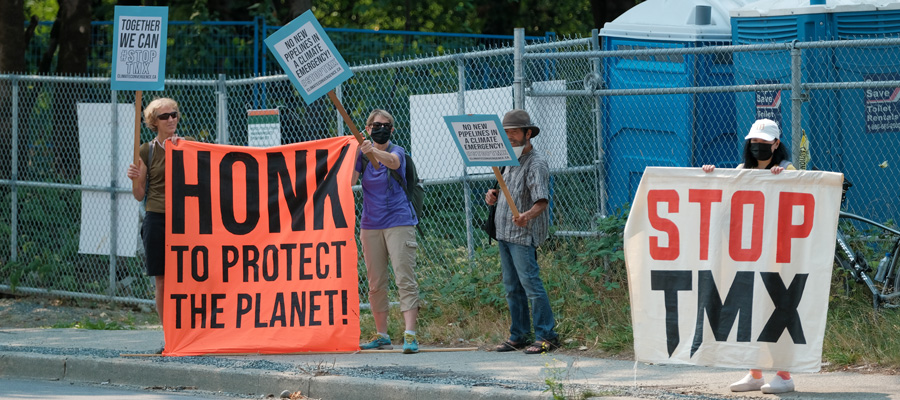Severe climate events cost BC economy billions more than reported estimates

Caroline and Paul Mosterman have seen their share of unusual weather in four-plus decades of farming. But nothing comes remotely close to what they experienced in November 2021 when their Sumas Prairie farm was inundated by floodwater.
Because the couple farmed on a floodplain, they had no flood insurance. So, when their farm buildings, blueberry plants, nursery, farm machinery and much more were overwhelmed by the rising waters, they took a huge hit.
“It’s going to be years before we recover financially. This has been taxing mentally, emotionally and physically,” Caroline said in an interview nine months after the historic floods.
The shock visited on the Mostermans is part of a much larger story involving the triple assault on British Columbia’s environment and economy from the unprecedented heat dome of June and July 2021, the horrific wildfires that followed and the floods.
The cumulative economic impact of those events has not been properly considered, but should be given that more frequent and extreme weather events will certainly come our way as a result of climate change.
Not only may we experience multiple climate assaults in a single year as we did in 2021, but each of them may amplify the other. Last year’s extreme heat, for example, set the stage for more intense wildfires, which burned so intensely in some watersheds that they altered water flows, thus making the November floods worse.
The triple assault on BC’s environment and economy: the unprecedented heat dome of June & July 2021, the horrific wildfires that followed and the floods.
Estimating the full cost of a climate catastrophe, let alone multiple catastrophes, is not easy. In the immediate aftermath, the first and often only estimates are of insured damages to property. But insured damages are only the tip of the proverbial iceberg.
Our new research shows that when the broad sweep of non-insured losses is considered along with a number of other factors, the estimated economic hit associated with the 2021 extreme weather events is in the range of $10.6 billion to $17.1 billion.
This gives BC the dubious distinction of having endured the worst climate disaster in Canadian history.
Our research, undertaken in partnership with Vancity, considered damages to assets and property, including non-insured damages to households and businesses.
Our estimate is that the Mostermans were part of a large and unfortunate group whose total non-insured losses from last year’s flooding and landslides ranged from a “low” of $1.6 billion to a high of nearly $5 billion.
We also looked at lost income for workers due to various factors including business closures or curtailments. Some of those losses were due to damaged or destroyed highways or rail lines that severely disrupted supply and distribution networks. Others involved destruction of core assets, for example cherry crops that literally cooked on the trees, and the ripple effect on migrant workers who lost their ability to pick.
Our estimate is that the heat dome took $205 million to $328 million out of peoples’ pockets.
We also considered the heightened costs associated with fighting wildfires, disaster response and the clean-up and rebuilding of critical infrastructure.
Estimating the full cost of a climate catastrophe, let alone multiple catastrophes, is not easy.
And we looked at impacts to vulnerable or marginalized communities, including First Nations, that were either evacuated because of fires or floods and in some cases evacuated twice to deal with back-to-back disasters.
All told, the combined cost of 2021’s extreme weather was equivalent to roughly three to five per cent of the province’s economy (GDP), a finding that underscores the need for senior levels of government to vastly increase funding of critical infrastructure to safeguard households, businesses and communities.
In Merritt, the destruction of insufficient dikes along the Coldwater River led to extensive damage to homes, businesses and public infrastructure including bridges and wastewater facilities.
The upper estimated cost for new dikes in Merritt is $169 million, a cost that the city’s annual tax base of $9 million cannot conceivably meet.
It is only a matter of when—not if—other climate catastrophes await us.
The $17-billion question now is whether or not we will be prepared for it.
A Climate Reckoning: The Economic Costs of BC’s Extreme Weather in 2021 was undertaken in partnership with Vancity. CCPA-BC thanks Vancity for their financial support of this research.
Topics: Climate change & energy policy, Environment, resources & sustainability, Provincial budget & finance


